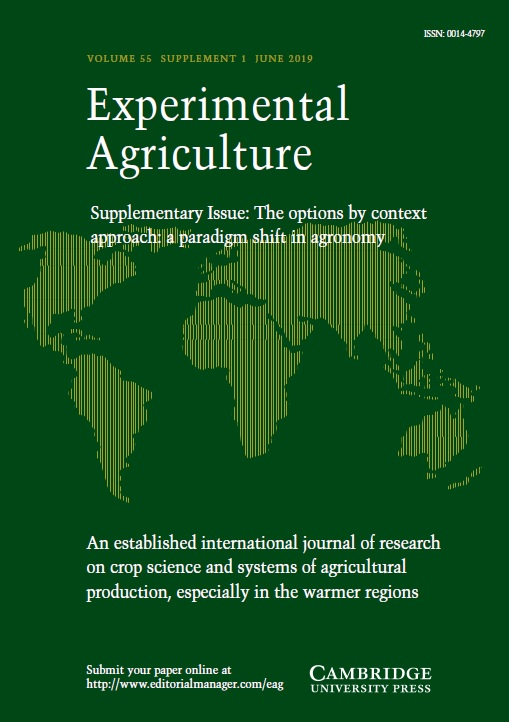Article contents
Water Duty Experiments with Sugarcane on Two Soils in Natal
Published online by Cambridge University Press: 03 October 2008
Summary
The irrigation water treatments in three experiments were based on a ‘water duty’ principle. One cosec of water was assumed to be available to irrigate 96, 211, 326 or 442 acres, representing minimum irrigation cycle times of 5, 11, 17 and 23 days respectively. Each experiment included a rainfed control treatment. The plots were watered as indicated by a soil moisture profit and loss account, but never more frequently than the minimum cycle time would allow. The results showed that maximum productivity could be achieved on a sand when I cosec of water was used to irrigate approximately 200 acres, but on clay maximum productivity was obtained with the largest water duty (442 ac/cusec). Net photosynthetic efficiency reached 3·9 per cent in the most heavily irrigated crops, and rainfall efficiency fell from about 85 per cent for rainfed conditions to about 50 per cent when the maximum amount of irrigation water was applied.
Information
- Type
- Research Article
- Information
- Copyright
- Copyright © Cambridge University Press 1968
References
REFERENCES
- 2
- Cited by

